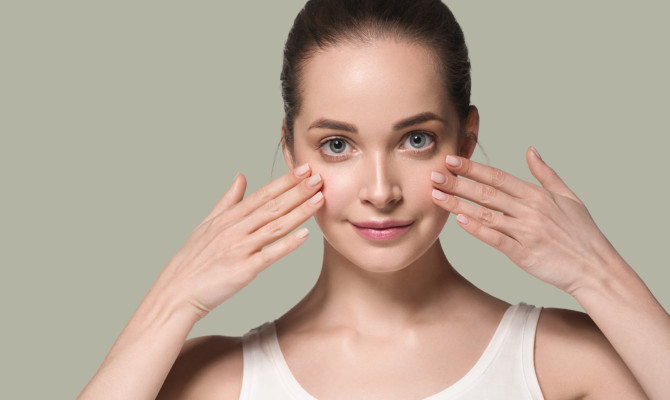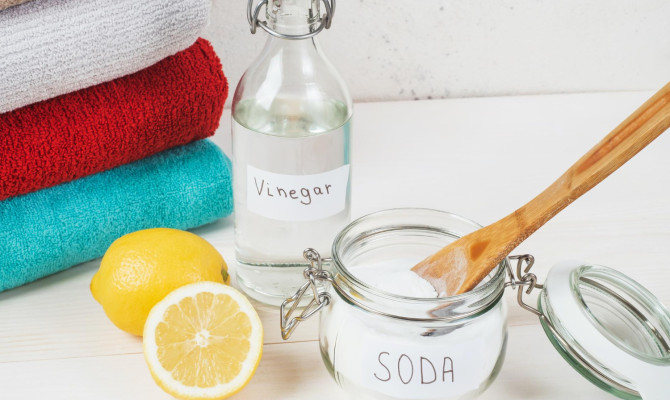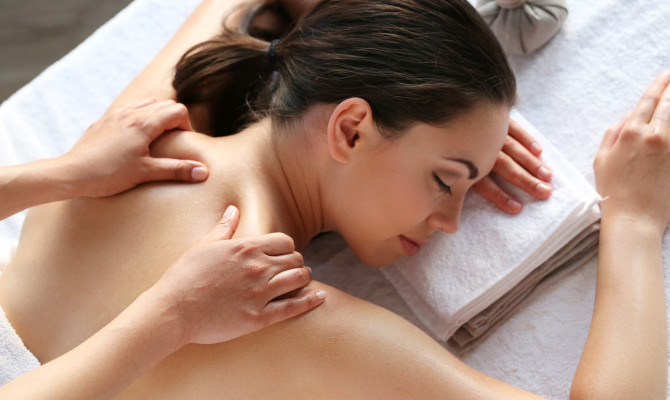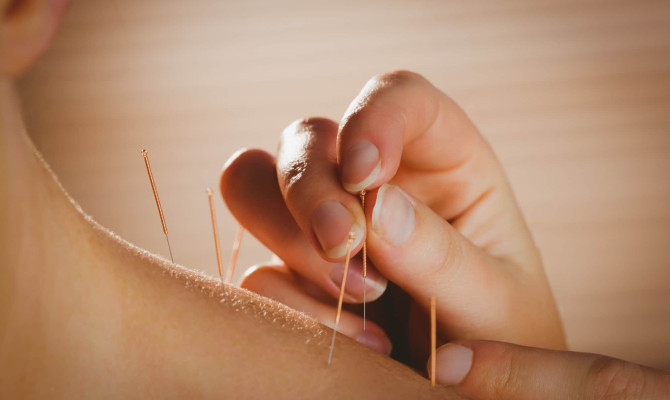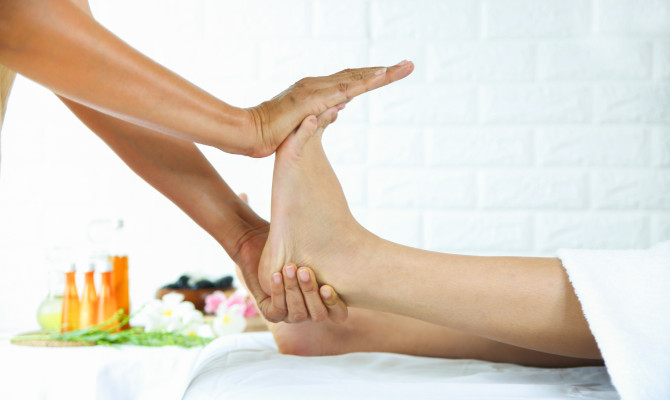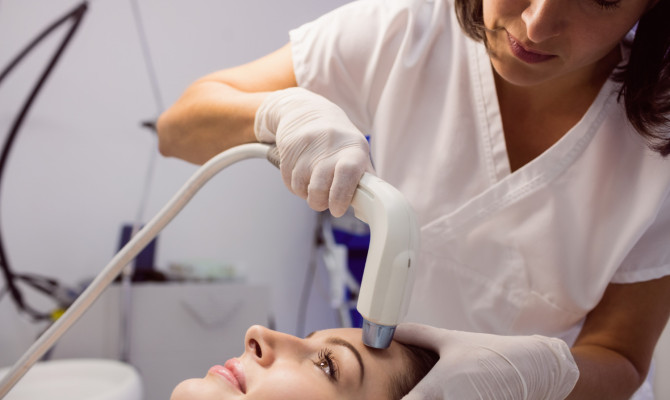Does Microneedling Hurt? Benefits, Procedure & Side Effects

- Microneedling
- 29 Sep 2023
Overview
Microneedling
Self-consciousness about skin imperfections including wrinkles, acne scars, enlarged pores, and stretch marks is common. Dermatologists may treat these skin problems with a wide range of technologies and drugs, including laser treatments, chemical peels, and microdermabrasion. One such technique is microneedling. Microneedling is a nonsurgical technique done in a dermatologist’s clinic that is minimally invasive.
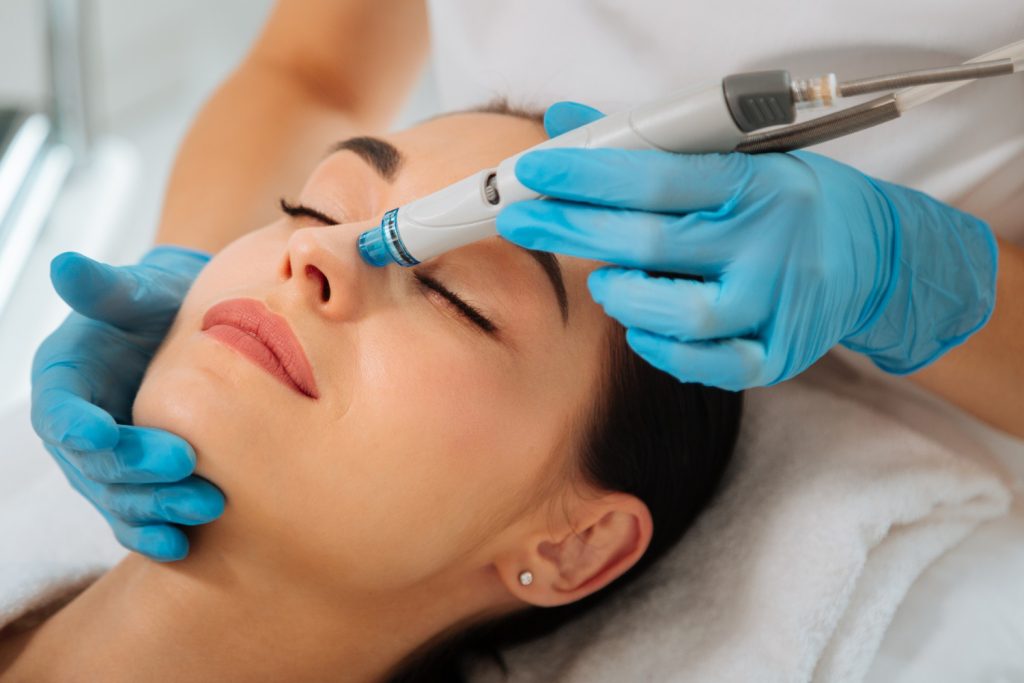
The therapeutic method of microneedling is easy to do, risk-free, highly efficient, and minimally intrusive.
Although it was first developed for the purpose of rejuvenating the skin, its applications have now expanded to include treating scars from acne, burns, trauma, alopecia, stretch marks, hyperhidrosis, and even medication delivery.
The original device used for microneedling has undergone several improvements during the last decade. Microneedling can be used with other surgical procedures for better outcomes.
Microneedling
What is Microneedling?
- Microneedling, 1 About | Researched based study from National Institutes of Health also known as percutaneous collagen induction treatment, is accomplished by the use of an electrically driven, portable drum or pen-shaped device fitted with very fine needles.
- Microneedling, or collagen induction treatment, is a kind of cosmetic microdermabrasion in which tiny needles are used to induce controlled trauma to the skin. Microneedling is used to promote the formation of collagen and elastin, which are vital to skin’s health and a young appearance, by stimulating the body’s natural wound healing process.
- These “micro-injuries” do not result in scarring because they encourage dermal remodeling, the skin’s natural process of mending itself.
- The non-invasive procedure may be applied everywhere on the body, from the head to the feet, to reduce the visibility of scars, stimulate collagen production, or promote new hair growth. Wrinkles, UV damage, and stretch marks may all benefit from microneedling.
- The trend has been around since 1995, but platforms like YouTube, TikTok, and Instagram have helped it to explode in popularity in recent years.
Mechanism
How does Microneedling Work?
The working of microneedling 1Mechanism | Researched based study from National Institutes of Health is explained here.
Microtrauma Induced:
- Microneedling involves rolling or stamping a device with very fine, sterile needles across the surface of the skin. Micro Injuries, or very small punctures, are made by these needles.
- These wounds are shallow and don’t inflict much harm, yet they’re still enough to set off the body’s natural healing process.
Phase of Inflammation:
- When an injury occurs, the body’s normal reaction is inflammation. In this case, inflammation is a protective response that alerts the body to deploy repair mechanisms to the damaged location.
- Vascular dilation increases blood flow, which carries healing molecules like white blood cells and growth factors to the injured area.
Activating the Healing Cascade:
- To repair the microscopic damage, the body sets in motion a chain of reactions known as the “healing cascade.”
- Growth factors, which are signaling molecules, are released as part of this cascade, and they encourage the formation of new cells and the manufacture of collagen and elastin fibers.
Synthesis of Connective Tissue Proteins:
- Proteins like collagen and elastin give skin its strength and suppleness. Particularly important for keeping skin taut and minimizing the appearance of fine lines and wrinkles is collagen.
- Microneedling causes regulated micro-injuries, which in turn activate and stimulate fibroblasts, the cells responsible for producing collagen and elastin.
Remodeling of Tissues:
- Several weeks after the surgery, new collagen and elastin fibers will progressively replace the older, damaged fibers. This procedure results in smoother skin, less visible scars and wrinkles, and a more refreshed look.
Skin Care after the Procedure:
- Skincare products may be administered right after microneedling to aid the healing process and boost the final outcome. Hydrating, soothing, and collagen-boosting chemicals are common in these products.
- However, in order to keep your skin from reacting negatively, you should only use items that have been approved by a dermatologist.
Microneedling is most effectively and safely conducted by medical specialists like dermatologists and certified estheticians. Multiple sessions are often advised for best outcomes, however this varies by skin type and treatment objectives.
At what age is it recommended to begin microneedling?
- Microneedling treatment is best started in one’s 20s or 30s since younger skin reacts better to needle-based collagen stimulation.
Procedure
Procedure of Microneedling:
Microneedling is a quick in-office treatment 1 Procedure| Researched based study from National Institutes of Health, taking anywhere from 10-20 minutes to complete. Prior to the treatment, patients need to be counseled about the anticipated consequences, delayed reaction, and need for several sittings.
- Preferably, vitamin A and C formulations should be applied to the skin twice daily for at least a month before surgery in order to enhance dermal collagen synthesis.
- For 45 minutes to 1 hour, eutectic combination of lignocaine and prilocaine/tetracaine is applied as topical anesthetic before beginning the treatment.
- The skin is stretched with one hand, and then rolled five times in the horizontal, vertical, and oblique directions with the other, after the region has been cleaned and salted.
- Uniform, easily controlled bleeding at the pinpoints has been established as the therapy objective. After the surgery, saline is applied to the region or cold packs are used to ease the patient’s discomfort. After that, the patient should take precautions against sun exposure by using sunscreen often.
- Patients had a positive experience with the operation, and side effects are minimal, consisting mostly of mild erythema and edema for a few days after treatment.
- There is no recovery period, and normal activities may be resumed the next day. To get the desired results on the skin, a series of treatments spaced out every 3-8 weeks is required.
- The ultimate benefits cannot be seen right away, Due to the continued production of new collagen for up to 6 months after treatment has ended.
Instruments and latest techniques of microneedling:
Microneedling sessions should be spaced out at least till the desired results are achieved, with the exact time frame being dependent on the needle length of the dermaroller being used.
Microneedling sessions 1 Instruments | Researched based study from National Institutes of Health should be farther apart the longer the needles are used. At least three weeks should pass between derma rolling sessions using a 1.5 mm tool.
At Home Derma roller:
- Patients may reduce pore size, fine wrinkles, and sebum production using home-care dermarollers (C-8), which have needle lengths of less than 0.15 mm and are used for transdermal administration of substances like lipopeptides and other anti-aging medicines.
- They have a maximum 100-use lifespan, and should be used twice or thrice weekly.
- The rollers should be rinsed in hot water and dried after each use.
Derma-Pen:
- Automatic microneedling using a pen-shaped instrument is what the Dermapen is all about. For fractional mechanical resurfacing, this user-friendly tool makes use of single-use needles and guides.
- There are nine to twelve needles in a row at the tip.
- Powered by a rechargeable battery, it vibrates like a stamp at either high speed (700 cycles/min) or low speed (412 cycles/min).
- It lessens the potential for discomfort during the process and saves money by eliminating the need to constantly replace the tool.
Dermafrac:
- The DermaFrac procedure is an advanced kind of microneedling that incorporates a variety of techniques, including microdermabrasion, microneedling, simultaneous deep tissue serum infusion, and light emitting diode (LED) therapy.
- DermaFrac treatments are intended to improve the appearance of photo- and age-related skin changes such wrinkles, fine lines, hyperpigmentation, enlarged pores, and uneven skin tone.
- Full treatment usually takes around 45 minutes to finish.
Microneedle Device with a Light Source:
- Recently, rollers with LED microneedles have been introduced. These use a combination of titanium microneedles and light-emitting diodes (LEDs) to deal with skin aging and scarring.
Why is Microneedling not working on me?
- Collagen stimulation causes new skin to appear around 30 days after treatment, so you may not be impressed until your next appointment. And at least 4 sessions are required for Every patient.
Can hair be grown via Microneedling?
- Microneedling has dual uses; it may be used to treat hair loss in addition to anti-aging skin conditions. There is even some evidence that it may assist with alopecia areata, a rare but severe kind of hair loss. It is believed that hair follicle health may be restored by inducing lesions in the skin.
Uses
Uses of Microneedling
There are several skin issues that may be treated with microneedling. It has a wide range of uses in the beauty and dermatology industries.
Microneedling is effective in treating a variety of disorders, including:
- Signs of Ageing: Microneedling has been shown to reduce the appearance of fine lines and wrinkles, especially around the eyes, lips, and forehead, by stimulating the creation of collagen and elastin.
- Acne Scars: Acne scars 1 Uses | Researched based study from National Institutes of Health may be treated with microneedling because it stimulates collagen production and remodels the scar tissue, making the scar smoother and less noticeable.
- Stretch Marks: Microneedling has the potential to lessen the visibility of stretch marks by increasing collagen formation and decreasing the color difference between the scars and the surrounding skin.
- Reduce Pores: Microneedling may help tighten the skin and minimize the size of enlarged pores, which is why it is recommended for people with this issue.
- Irregular Skin Tone: It may help smooth down rough patches on the skin brought on by things like sun damage and becoming older.
- Rejuvenates Skin: Microneedling, with the right skincare products, may be useful for treating hyperpigmentation by speeding up the skin’s natural renewal process and fostering the development of fresh, uniformly coloured skin.
- Skin Glow: Increased blood flow and cell turnover are two of the ways in which microneedling may boost overall skin glow.
- Alopecia (Hair Loss): Due to its ability to stimulate hair follicles and promote hair growth, microneedling has been investigated as a therapy for some kinds of hair loss.
- Sunburn: By increasing collagen and elastin production, microneedling helps rejuvenate sun-damaged skin.
- To Refresh the Skin All Over: Microneedling may be performed as a preventative treatment to keep skin looking young and avoid future indications of ageing, even if a particular skin problem is not a concern.
- Acne scars: Acne scars of all shapes and sizes, from icepicks to boxcars to rolling scars, may benefit from microneedling treatment. It helps rebuild scar tissue and promotes collagen formation, both of which contribute to a more even skin tone.
- Incisions and Stitches: Scars from operations or injuries may be treated with microneedling to make them less noticeable and less pronounced.
- Burn scars: By stimulating collagen production and skin remodeling, microneedling may aid in the improvement of burn scar texture and appearance.
- Hypertrophic & Keloid Scars: The possibility of using microneedling to treat keloid and hypertrophic scars has been investigated. The regulated micro-injuries promote healing and normalize collagen synthesis, which speeds up the recovery process.
- Post-Inflammatory Hyperpigmentation: Acne and eczema are only two examples of disorders that may lead to post-inflammatory hyperpigmentation (PIH), which can be treated with microneedling and the right topical therapies.
- Rosacea: Although microneedling may not cure rosacea, it may help reduce the appearance of visible blood vessels and uneven skin tone by stimulating the skin’s natural healing processes.
- Alopecia (Hair Loss): For certain cases of hair loss, such androgenetic alopecia, “microneedling for hair growth,” or simply “microneedling,” has been investigated as a potential therapy. Its purpose is to encourage hair development by activating dormant hair follicles.
- Vitiligo: Depigmented skin patches caused by vitiligo have been researched using microneedling as a complementary treatment. The procedure has the potential to stimulate melanocyte activity, which in turn might induce repigmentation.
- Skin’s Texture: By stimulating collagen formation and improving the skin’s overall quality, microneedling is useful for correcting a variety of textural imperfections, including rough skin texture.
- Skin Laxity: Face, neck, and body skin are just some of the places where loose or sagging skin might benefit from microneedling.
- Photoaging: Improvements in skin firmness and texture may be achieved with the use of microneedling as part of a treatment plan for photoaged skin.
The best treatment strategy depends on the individual’s condition, skin type, and other factors, all of which may be determined by consulting with a dermatologist or other licensed skincare specialist. In addition, microneedling may work best when used with other therapies for certain disorders.
Advantages
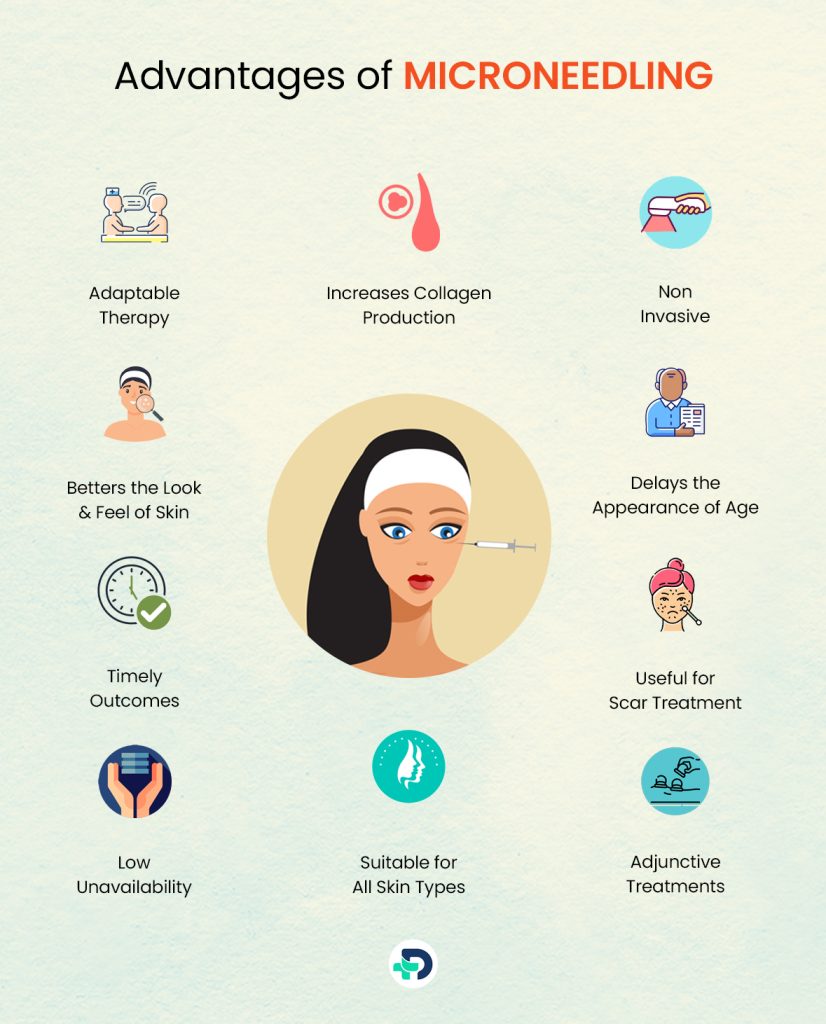
Advantages of Microneedling
As a cosmetic and dermatological technique, microneedling has several benefits. Some of the major advantages are as follows:
- Increases Collagen Production: Microneedling’s ability to boost collagen and elastin synthesis is a major perk since these proteins are essential to keeping skin plump, flexible, and young looking.
- Non Invasive: Microneedling is a non-surgical technique that uses a tiny needle to make tiny punctures in the skin. As a consequence, patients should expect faster healing and fewer complications than with more intrusive methods.
- Adaptable Therapy: Microneedling may be done on many different areas of the body and on many different skin tones.
- Delays the Appearance of Age: Microneedling’s ability to stimulate collagen formation means it may be used to delay the onset of wrinkles and other visible indications of aging.
- Betters the Look and Feel of Skin: Skin texture, tone, and the visibility of pores may all be enhanced with microneedling.
- Useful for Scar Treatment: Because it promotes skin remodeling and collagen creation, it is useful for minimizing the visual impact of scars of many origins, including acne scars, surgical scars, and others.
- Improves the Efficiency of Topically Applied Products: Microneedling increases the effectiveness of topical skincare products by creating micro-channels that allow for deeper product penetration.
- Low Unavailability: Most people only have moderate redness and swelling for a day or two after microneedling, and the healing process is quick.
- Suitable for All Skin Types: Individuals with darker skin tones, who may be at increased risk for problems with some laser treatments, may safely undergo microneedling.
- Increased Product Utilization: Microneedling improves the efficacy of serums, creams, and other skincare products by increasing their absorption due to the micro-injuries it creates.
- Acceptable in Highly Sensitive Areas: Microneedling may be utilized in places where conventional treatments may be too dangerous, such as the under-eye area and the neck.
- Timely Outcomes: The main advantages of microneedling, however, don’t manifest until collagen formation rises over the course of many weeks after treatment has been completed.
- Adjunctive Treatments: Microneedling is an effective skincare treatment that may be used alone or in conjunction with other methods to get optimal results.
Does Microneedling lift the face?
- Lifting sagging skin, eliminating extra skin, straightening a double chin, and correcting wrinkles in the face are just some of the ways that this surgery may reduce the visible indications of aging in the face and neck.
Disadvantages
Disadvantages of Microneedling
Although there are many benefits of microneedling, potential patients should also be informed of its risks and limitations. Microneedling has a few possible drawbacks, including:
- Infection Potential: Infection is possible due to micro-injuries in the skin caused by microneedling if suitable sanitation and hygiene measures are not followed.
- Sensitive Skin: The skin may be very sensitive, red, and puffy just after microneedling. Some people may feel uneasy for a few days as a result of this heightened sensitivity.
- Possibility of Pain or Discomfort: Microneedling may cause slight pain or discomfort in some patients, especially in regions that are very sensitive, despite the use of topical numbing lotions before the operation.
- Inflammation and Swelling: Within microneedling, it’s normal to have some redness and swelling, but these symptoms often go away within a few days. However, there are occasions when they last for much longer.
- Hyperpigmentation Dangers: After inflammation, those with darker skin tones may get post-inflammatory hyperpigmentation (PIH), a darkening of the skin. Protecting yourself from the sun after surgery is crucial.
- Scarring: It may occur if microneedling is not done correctly or if aftercare is neglected, and this is particularly true for those who have a history of slow wound healing.
- Allergic Reaction Potential: Some people may have adverse reactions to or discomfort from topical treatments used after surgery.
- Multiple settings: Although some progress may be seen after only one session, the best outcomes usually need numerous sessions spread out over a period of weeks; this may be inconvenient and costly.
- Downtime: While the recovery time is often shorter after non-invasive operations, there may still be a period when the skin is red, puffy, or irritated.
- Not Suitable for Use in All Environments: Active infections, open wounds, eczema, psoriasis, and a history of keloid scarring are some of the skin problems that may prevent microneedling from being advised.
- Interim Results: Microneedling boosts collagen formation and has long-term advantages, but you may need touch-up treatments to keep them looking their best.
- Cost: Because many microneedling treatments and the necessary skincare products may add up in price, it’s crucial for people to plan accordingly.
Minimizing the risk of problems and maximizing the expected outcomes requires careful aftercare and strict attention to post-procedure guidelines.
Does microneedling lighten skin?
- Microneedling helps reduce excessive pigmentation because it stimulates cell death and new skin growth at the epidermis and dermis levels. In addition to its ability to lighten the skin, microneedling has a number of other advantages and is accepted by people of all skin tones and kinds.
Contraindications
Contraindications for Microneedling
While microneedling is typically well tolerated and produces desirable results, there are a few exceptions that should prevent or limit its use. Before deciding whether microneedling is right for you, it’s important to have your skin checked out by a dermatologist or certified skincare specialist.
Some conditions that shouldn’t be treated with microneedling 1 Contraindications | Researched based study from National Institutes of Health include:
- Active infections: Active skin infections, including cold sores or herpes breakouts, are not good candidates for microneedling. Active skin diseases such as eczema, psoriasis, or rosacea in the treatment region are another contraindication.
- Cuts & Open Wounds: Microneedling shouldn’t be done if the treatment region has any cuts, sores, or open wounds since it raises the risk of infection.
- Sun Burns: Microneedling should be put off until after any sunburns or major sun damage have healed.
- Keloid Scars: Microneedling may cause more severe scarring in those who have a predisposition to keloid or hypertrophic scarring.
- Blood Disorders: Hemophilia and other abnormalities of blood coagulation may make microneedling more dangerous because they make it more difficult for the blood to stop flowing during the procedure.
- Pregnancy & Breastfeeding: Microneedling has not been studied extensively, although it is usually advised that women not have any elective cosmetic treatments done while they are pregnant or nursing.
- Skin Cancers Past: Avoid or proceed with care while doing microneedling if you have a history of skin cancer or any moles of concern in the treatment region.
- Blood Thinner Use: The risk of bleeding increases with the use of certain drugs, such as blood thinners or anticoagulants, in conjunction with microneedling. If you are currently on any of these drugs, please speak with your doctor.
- Recent Laser or Chemical Peel Procedures: Before receiving microneedling, it is advisable to wait a set amount of time (generally a few weeks to a few months) after having a comparable operation done, such as a chemical peel, laser treatment, or other similar therapy.
- Acne that is currently active: Active acne outbreaks are not good candidates for microneedling since the procedure might spread germs and make the problem worse.
- Autoimmune Diseases: There is a possibility that those with autoimmune illnesses or impaired immune systems are more likely to have negative responses to microneedling.
- Recent Botox or injectable fillers: After getting Botox or injectable fillers, you should wait a while before getting microneedling done.
A comprehensive consultation with a trained specialist who can assess your medical history, skin type, and current skin condition is necessary before deciding whether or not microneedling is right for you. This will increase the likelihood that microneedling will be both safe and effective for you.
How many sessions of Microneedling are necessary?
- There are several factors that will determine how many microneedling sessions you will need. Up to four treatments may be necessary for acne scars or other fairly deep scars. Stretch marks and heat burns, however, may need additional procedures for effective therapy.
- The treatment may need to be repeated as often as twice a year in order to effectively cure the indications of aging. Keep in mind that there should be at least four weeks between any two sessions.
Derma Rollers vs. Professional Microneedling:
- The goal of both microneedling and derma rolling is to stimulate collagen formation by creating microscopic punctures in the skin. Your skin’s quality and health will naturally increase as a result of this.
- Derma rollers 2 Derma Roller | Researched based study from National Institutes of Health may be used at home, whereas microneedling is performed by a medical specialist at a clinic. The increased precision with which microneedling may be conducted makes it a safer option.
- If you don’t know what you’re doing, using a derma roller might be dangerous. In addition, the benefits from microneedling are both immediate and long-lasting, unlike those from derma rollers. However, the effects of derma rollers used at home don’t last long.
Preparation
Preparing for & Recovering from Microneedling Treatment
Microneedling therapy is a multi-stage process, including preparatory measures, the procedure itself, and aftercare. If you stick to these rules, you should have a pleasant and productive time:
Preparation:
- Consultation: Make an appointment with a certified skincare expert or dermatologist to talk about your objectives, medical history, and concerns. You may use this information to figure out whether microneedling is right for you.
- Avoid sun: Avoid the sun as much as possible in the days leading up to your treatment, and definitely don’t go tanning. It’s possible that sunburned or tanned skin is more reactive.
- Products for the Skin: Your dermatologist or aesthetician may advise you to avoid using certain topical treatments, such as retinoids or exfoliants, in the days leading up to your surgery.
- Hydration: Be sure to consume lots of water in the days leading up to the treatment to keep your skin moisturized.
- Drugs: Tell your skincare specialist about any and all drugs you are currently using. Pre-operative adjustments to drugs such as blood thinners may be necessary.
During the Course of Therapy:
- Numbing Cream: It is common practice to apply a numbing lotion to the skin before the surgery. Be sure to be there early so the numbing cream has time to work.
- Method Specifics: Your aesthetician will go through the process with you, including details like needle depth and treatment zones.
- Time Required for Procedure: The microneedling session time will vary according to the targeted locations. The average length of a session is between 30 minutes and 1 hour.
Care Following Surgery & Recovery:
- Immediate follow-up: After the operation, your skin may look and feel red and irritated. Possible side effects include minor edema.
- Topical Products: You may be given post-procedure items to use by your skincare specialist. Products that are calming and moisturizing may speed recovery.
- Don’t Wear Makeup: Makeup application should be delayed for at least 24 hours after the operation to enable the skin to heal.
- Sunscreen: Protect your skin from the sun by using a broad-spectrum sunscreen with a high sun protection factor (SPF). To avoid hyperpigmentation and other post-treatment issues, using sunscreen is essential.
- Mild Soaps: When washing your face, use a mild soap that won’t irritate your skin. When your skin is still healing, don’t use scrubs or exfoliants that are too rough. Do not use retinoids, alpha hydroxy acids (AHAs), beta hydroxy acids (BHAs), or any other active ingredients on your skin unless directed to do so by a skincare expert.
- Hydration: Hydrate your skin consistently using goods your skincare expert has suggested.
- Physical Activity: Stay out of the gym and away from any activity that will make you sweat heavily for at least 48 hours following surgery.
Is Microneedling Painful?
Individual pain tolerance, 3Is it painful | Researched based study from National Institutes of Health the depth of the microneedling therapy, and the procedures and equipment used all affect whether or not the procedure is considered unpleasant.
Microneedling is a procedure in which tiny needles are used to puncture the skin in a controlled manner. It may be unpleasant for some individuals while others would scarcely notice it.
Some of the things that might make you feel more or less uncomfortable are:
Length of the Needle:
- A deeper needle prick may cause greater pain. Microneedling conducted by a dermatologist or other certified professional may include longer needles than those used in at-home treatments, which may be more uncomfortable for certain people.
Topical Anesthetics:
- To reduce patient anxiety and suffering, many medical professionals use a numbing cream applied topically before the surgery. This may significantly lessen any discomfort felt during microneedling.
Pain Tolerance:
- Microneedling may cause modest discomfort for some people and severe pain or others.
Location:
- It’s possible that certain parts of your face are more delicate than others. The skin of one’s forehead and cheeks, for instance, tends to be less reactive than that of one’s nose or upper lip.
Apparatus & Method:
- The results of microneedling might vary depending on the instrument utilized and the method used. Technology advancements may one day allow for more pleasant gadget use.
After Microneedling, is it OK to use Vitamin C serum?
- For at least 48 hours after microneedling, you shouldn’t use retinol or vitamin C serum. If you use products with a potent anti-aging component, you may want to ease back into your regular beauty routine after waiting two full days before returning to it.
Conclusion
Microneedling, Little Pain but More Benefits
To sum up, microneedling is a kind of cosmetic microneedling that uses very small needles to make tiny punctures in the skin in a carefully regulated manner. The degree of pain felt during microneedling varies from person to person and is influenced by a number of variables.
Microneedling causes some pain, but for many people it’s seen to be worth it because of the rejuvenating effects it’s expected to have on their skin. By encouraging the body to produce more collagen and elastin, the treatment may help you achieve smoother skin, fewer scars 4Conclusion| Researched based study from National Institutes of Health, and a more rested and young look.
Any feedback on this article?
 This Articles content was accurate
This Articles content was accurate Very Informative Article
Very Informative Article I have a question or a comment
I have a question or a comment
 This article contains inaccurate content
This article contains inaccurate content This article was not helpful
This article was not helpful I have a question or a comment
I have a question or a comment
We appreciate your helpful feedback!
Checkout our social pages
References
-
National Institutes of Health
About | Mechanism | Procedure | Contraindications | Instruments
-
National Institutes of Health
Derma Roller
-
National Institutes of Health
Is it painful?
-
National Institutes of Health
Conclusion














